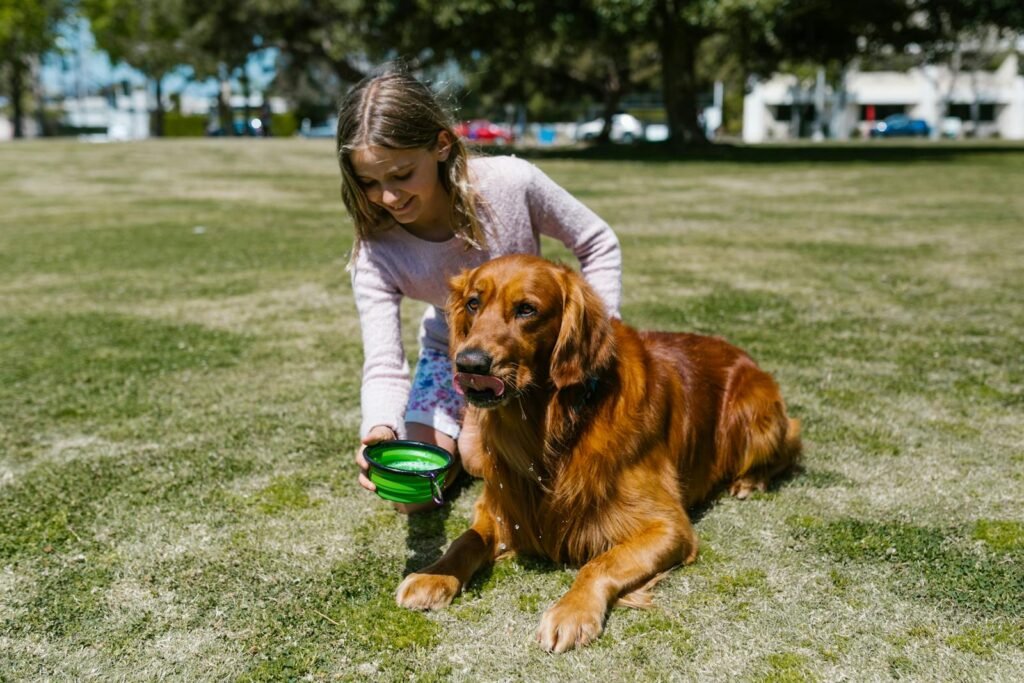Could that tail-wagging best friend in your home be doing more than just warming your heart? According to new research, owning a pet dog might actually help protect children who are genetically prone to eczema—a finding that adds a compelling twist to the story of how our environment shapes our health.
The study, published in Allergy, brings together leading scientists from the Universities of Edinburgh and Bristol, Helmholtz Munich, and the London School of Hygiene & Tropical Medicine. By analyzing the health data of nearly 300,000 people across Europe, the researchers discovered how certain early-life exposures—including dog ownership—can reduce the risk of eczema in genetically vulnerable children.
Dogs, Genes, and the Science of Skin Protection

At the heart of the study is the interaction between genetics and environment. Researchers examined 24 genetic variants known to increase eczema risk and 18 early-life exposures such as breastfeeding, smoking, pet ownership, and washing practices.
One standout finding involved a gene variant near the interleukin-7 receptor (IL7R)—which plays a role in immune system regulation. Children carrying this variant typically face a higher risk of developing eczema. However, when those same children were exposed to dogs early in life, their risk dropped significantly.
Laboratory modeling revealed that dog exposure modified how the gene behaved, reducing its inflammatory effects on skin cells.
“We know that genetic makeup affects a child’s risk of developing eczema and previous studies have shown that owning a pet dog may be protective, but this is the first study to show how this may occur at a molecular level,” said Dr. Sara J. Brown, the study’s senior author from the University of Edinburgh.
Why Having Siblings Might Help, Too

Interestingly, it wasn’t just dogs that seemed to provide protection. The study also found that children with older siblings were less likely to develop eczema when certain genetic variants were present.
This supports the hygiene hypothesis, which suggests that early exposure to a diverse range of microbes—whether from pets or siblings—can help train the immune system to react appropriately, rather than overreacting in the form of allergic conditions like eczema.
“This study sheds light on why some children develop eczema in response to environmental exposures while others don’t,” explained Dr. Marie Standl from Helmholtz Munich. “They help us move toward more personalized, effective prevention strategies.”
Limitations and Future Research

While the findings are promising, the researchers acknowledge some limitations. Most of the participants were of white European descent, meaning more studies are needed to confirm whether the same protective effects occur in other racial or ethnic groups.
They also emphasized that not every preventive measure works for everyone. What helps one child may not help another, especially when genes and lifestyle vary widely.
Still, the results offer hope for targeted eczema prevention—where understanding a child’s genetic profile could help parents make decisions about environmental exposures during early development.
“Our findings mean we have a chance to intervene in the rise of allergic disease to protect future generations,” Dr. Brown noted.
A Companion With Unexpected Benefits

This study is a heartening reminder that dogs may offer more than love and loyalty—they might actually influence our health at a genetic level. For parents navigating the uncertainty of a child’s eczema diagnosis or wondering how to reduce the chances of flare-ups, this research offers a hopeful message: the presence of a pet dog could be doing silent but powerful work behind the scenes.
It’s not just about muddy paws and wagging tails. Dogs bring with them a diverse microbial environment, daily opportunities for movement and bonding, and now, as science suggests, a surprising potential to reshape how our genes behave. While this doesn’t mean every family should rush out to adopt a dog, it reinforces how profoundly our relationships with animals can affect us—sometimes in ways we’re only beginning to understand.
At a time when allergic conditions are rising across the globe and families are seeking safer, more natural ways to support their children’s health, perhaps one of the most powerful preventions doesn’t come from a bottle—but from a bark, a lick, and a loyal companion curled up at the foot of the bed.







